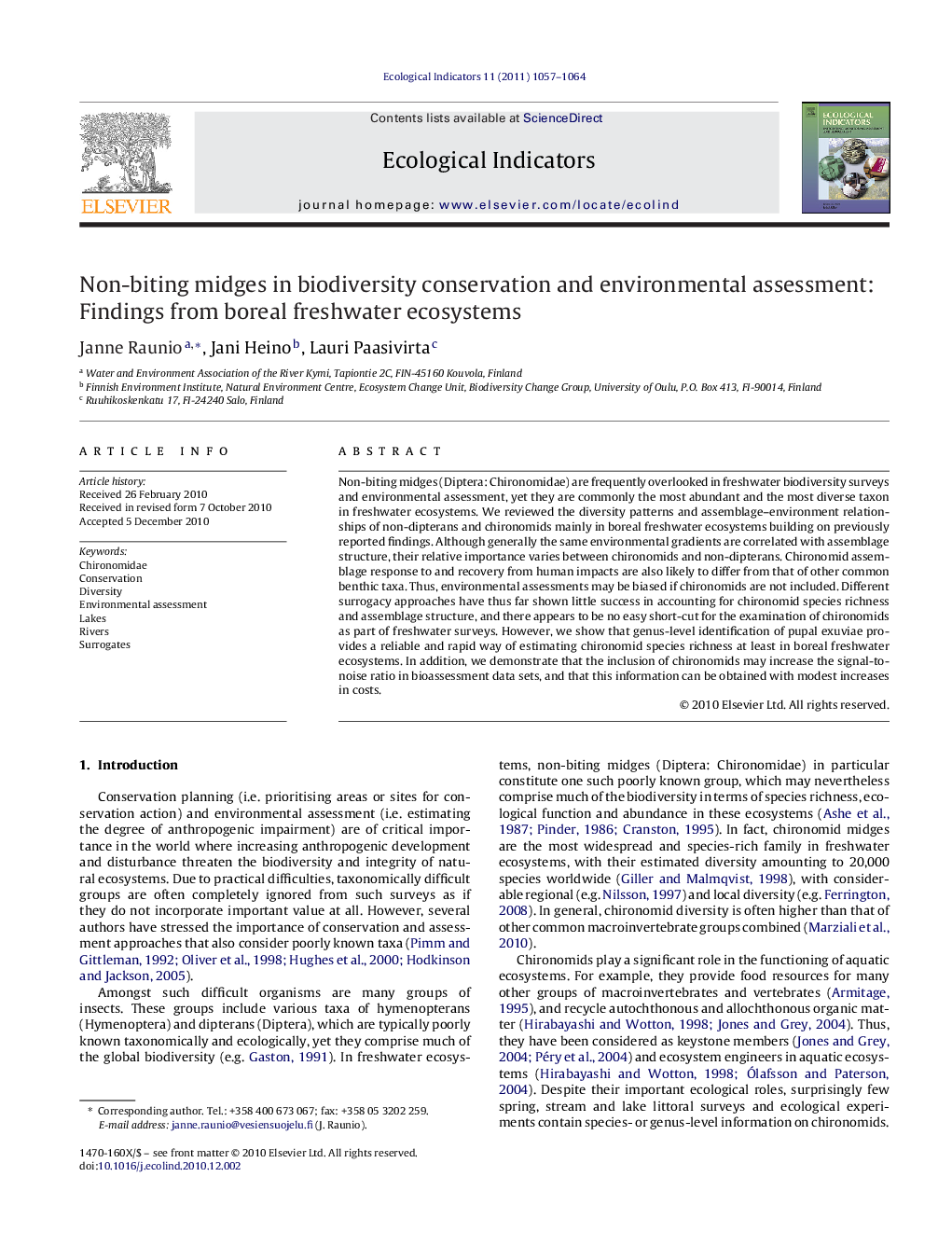| Article ID | Journal | Published Year | Pages | File Type |
|---|---|---|---|---|
| 4374040 | Ecological Indicators | 2011 | 8 Pages |
Non-biting midges (Diptera: Chironomidae) are frequently overlooked in freshwater biodiversity surveys and environmental assessment, yet they are commonly the most abundant and the most diverse taxon in freshwater ecosystems. We reviewed the diversity patterns and assemblage–environment relationships of non-dipterans and chironomids mainly in boreal freshwater ecosystems building on previously reported findings. Although generally the same environmental gradients are correlated with assemblage structure, their relative importance varies between chironomids and non-dipterans. Chironomid assemblage response to and recovery from human impacts are also likely to differ from that of other common benthic taxa. Thus, environmental assessments may be biased if chironomids are not included. Different surrogacy approaches have thus far shown little success in accounting for chironomid species richness and assemblage structure, and there appears to be no easy short-cut for the examination of chironomids as part of freshwater surveys. However, we show that genus-level identification of pupal exuviae provides a reliable and rapid way of estimating chironomid species richness at least in boreal freshwater ecosystems. In addition, we demonstrate that the inclusion of chironomids may increase the signal-to-noise ratio in bioassessment data sets, and that this information can be obtained with modest increases in costs.
